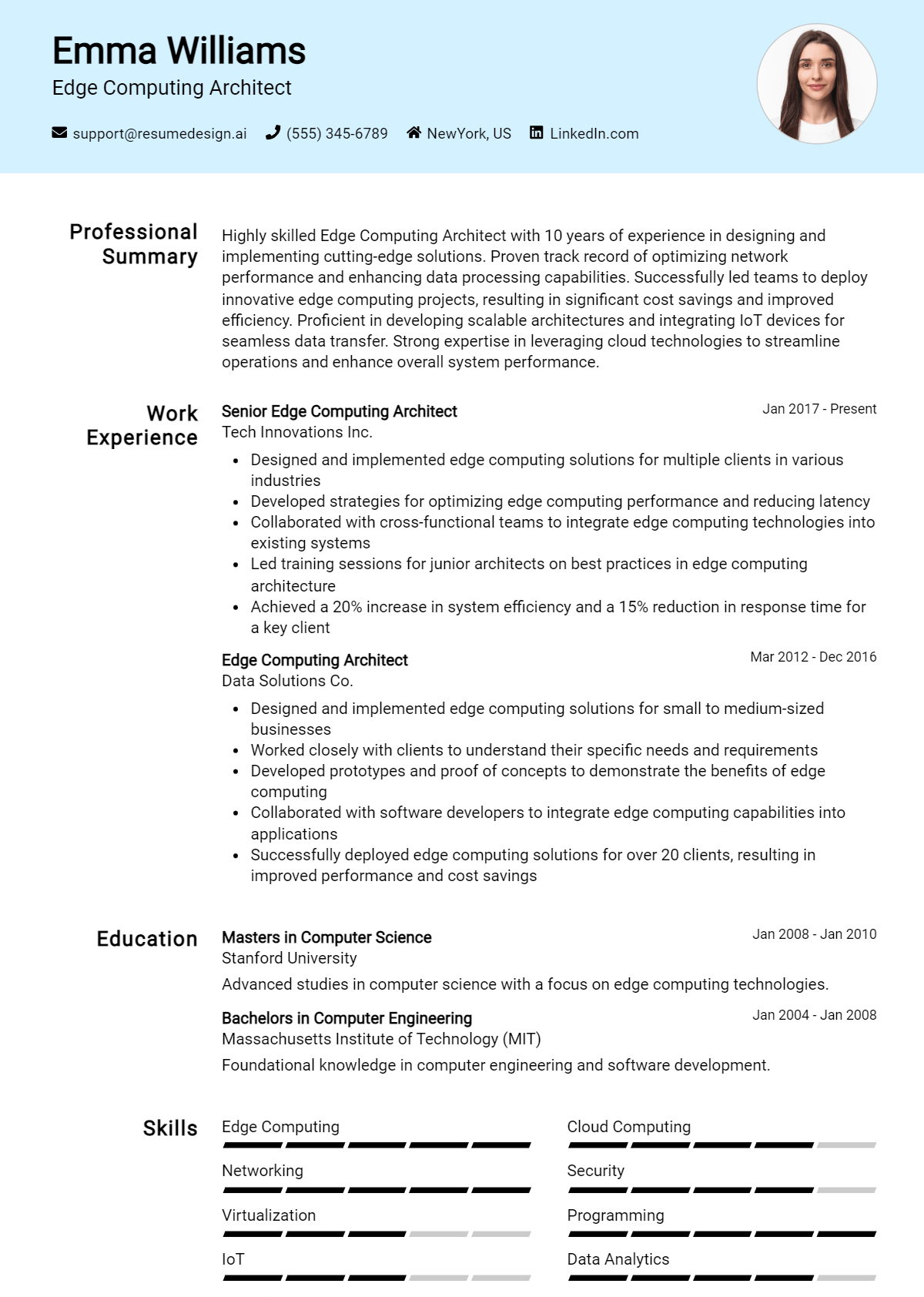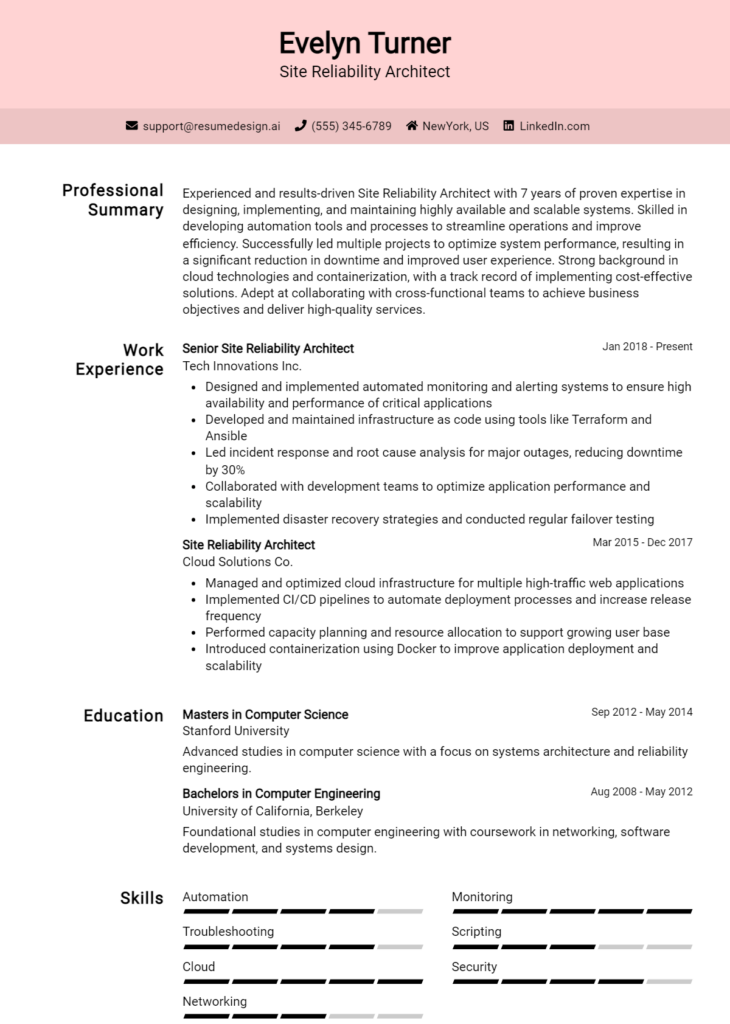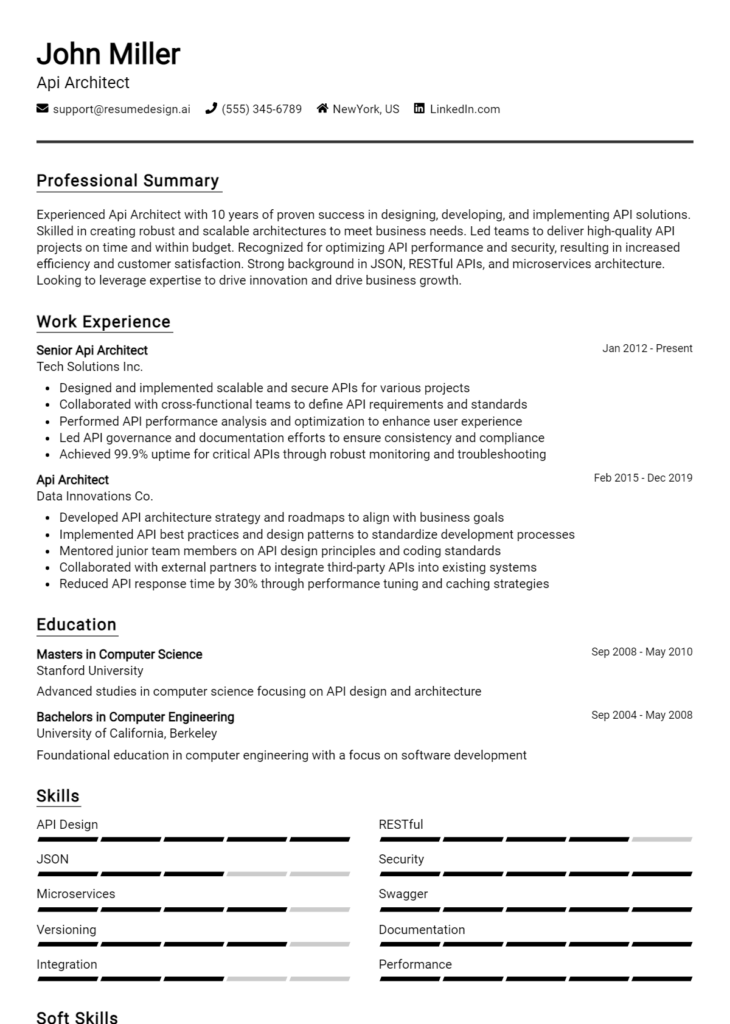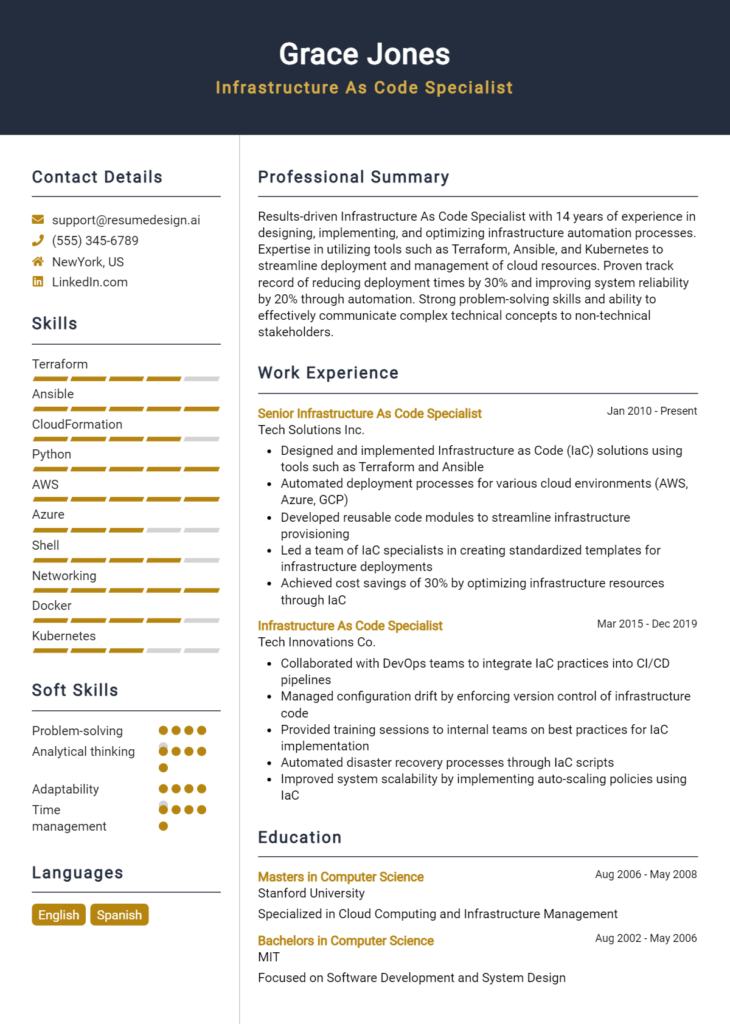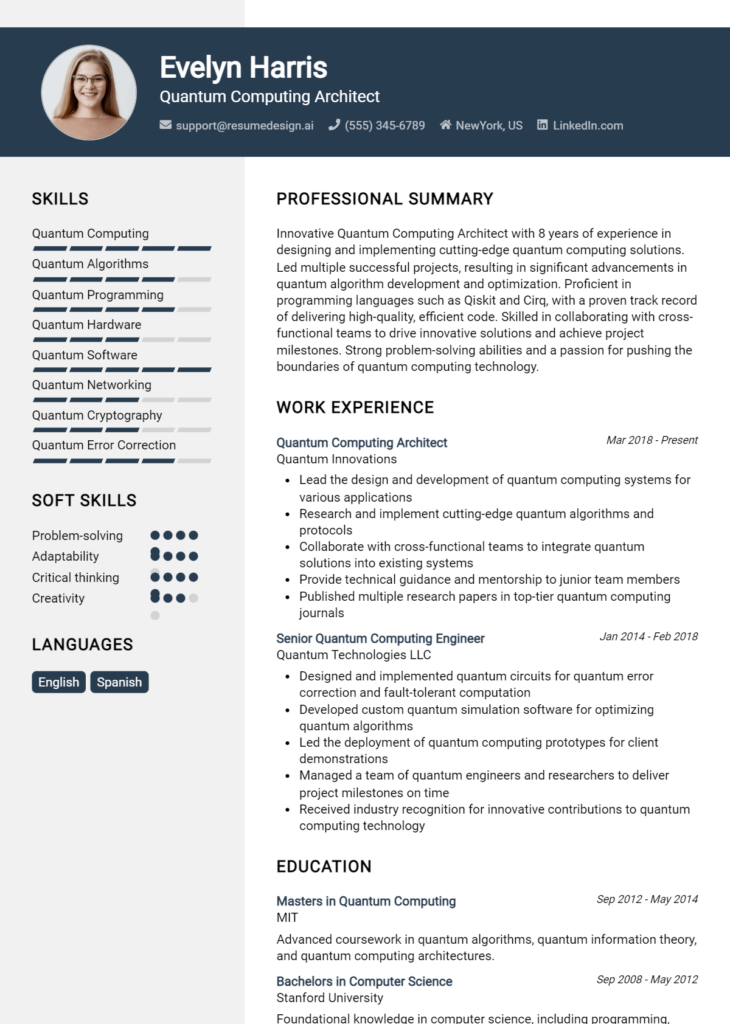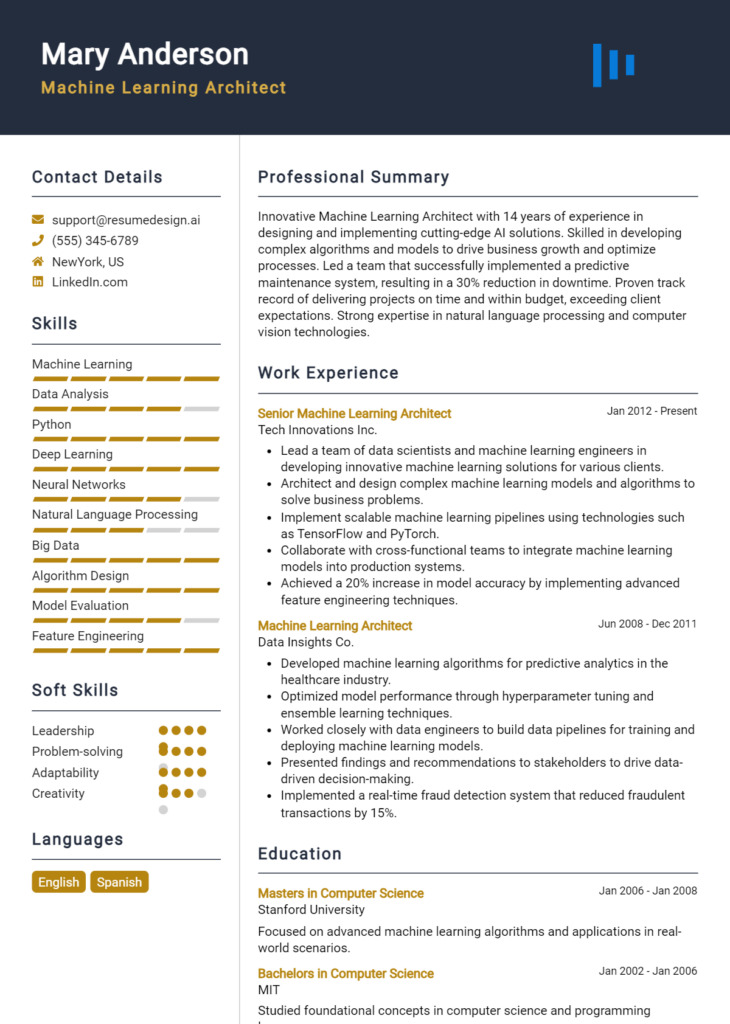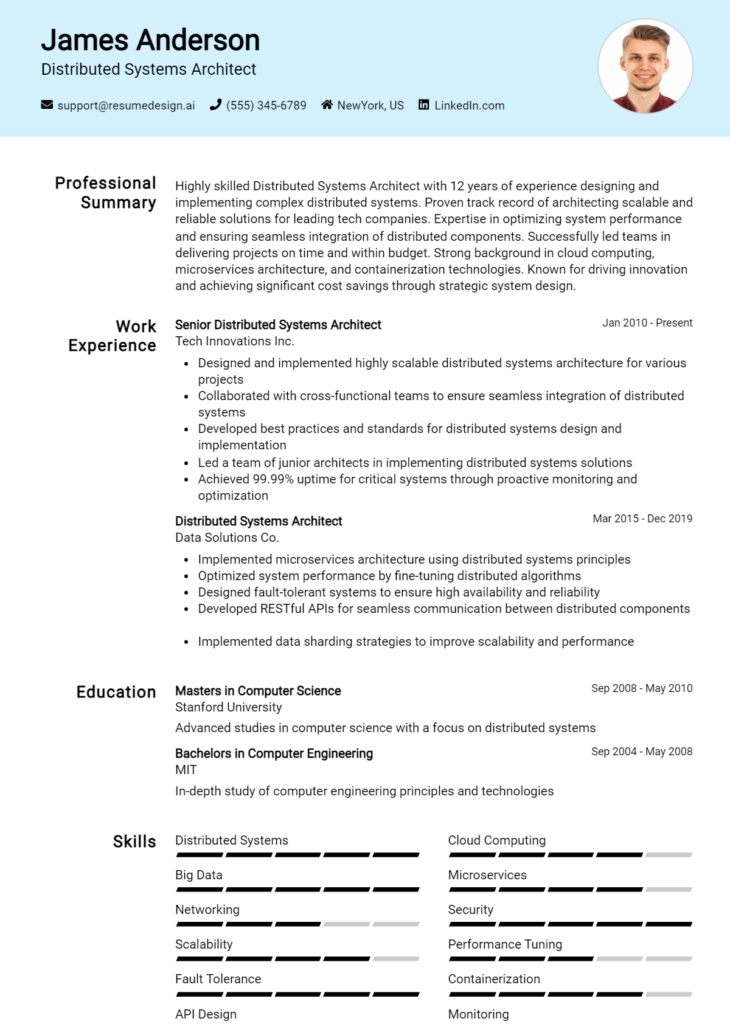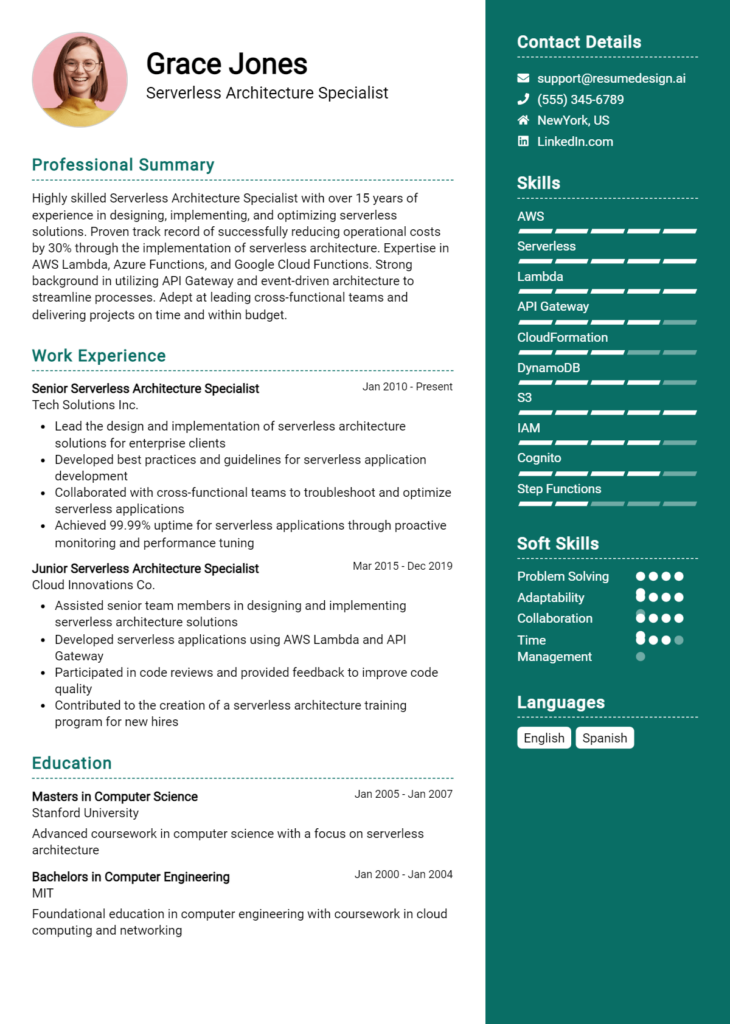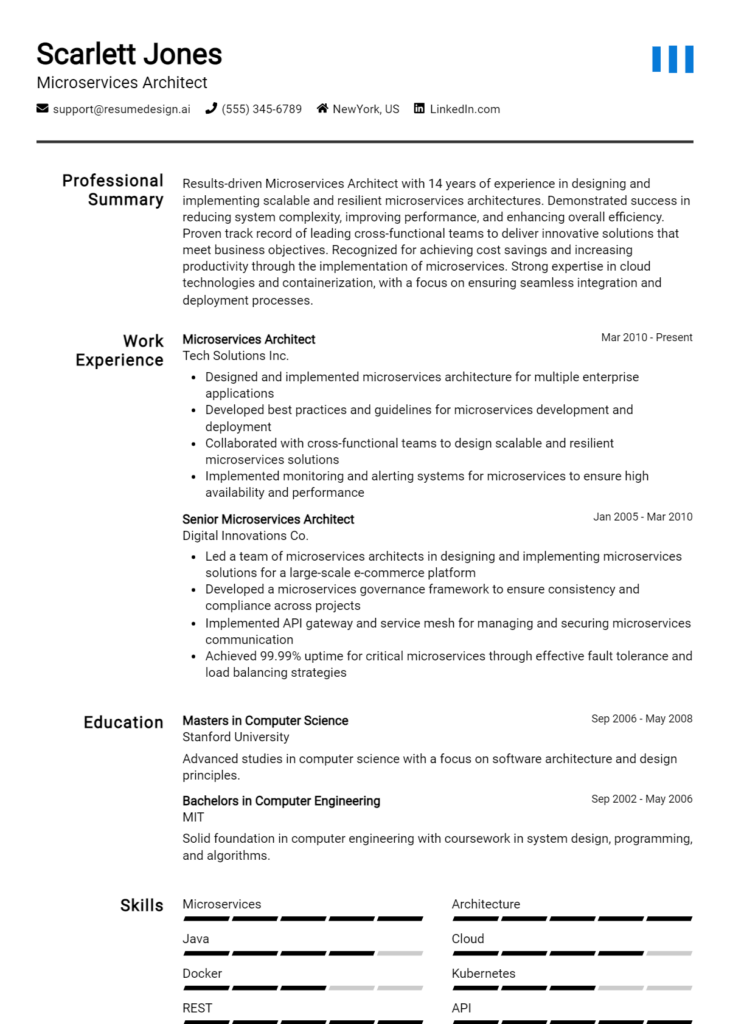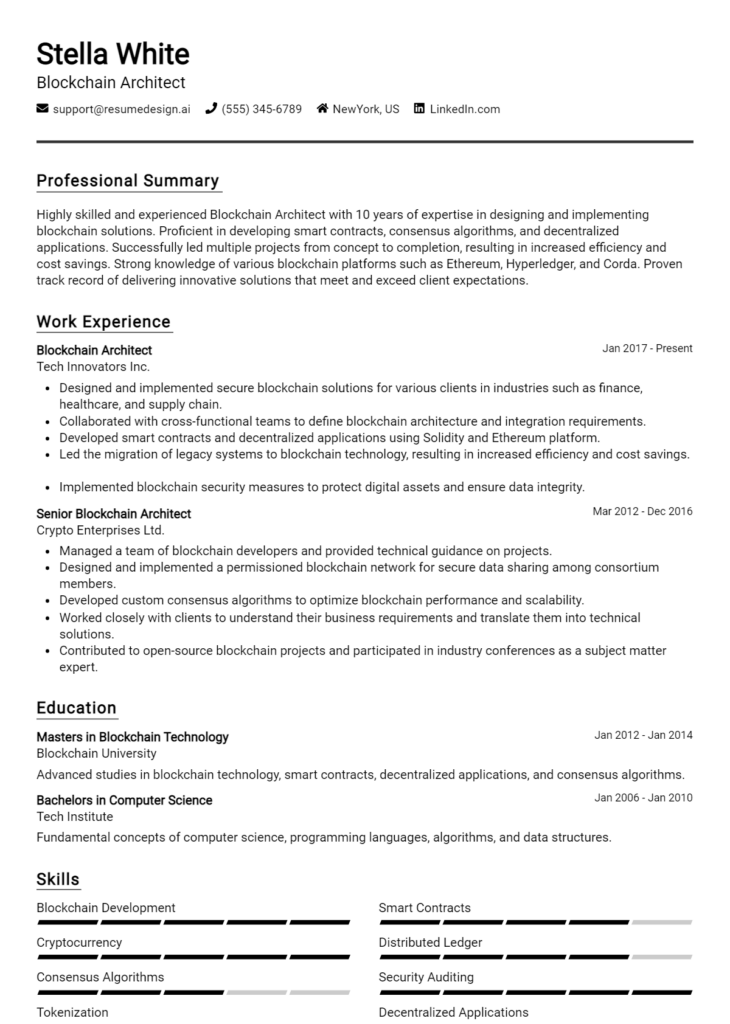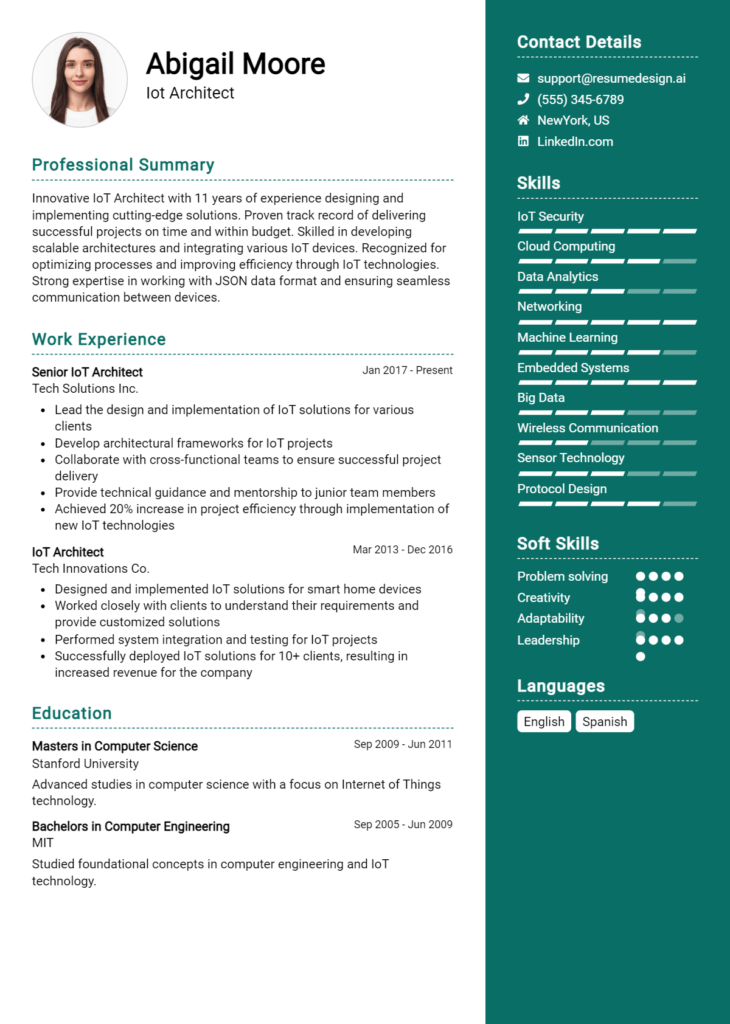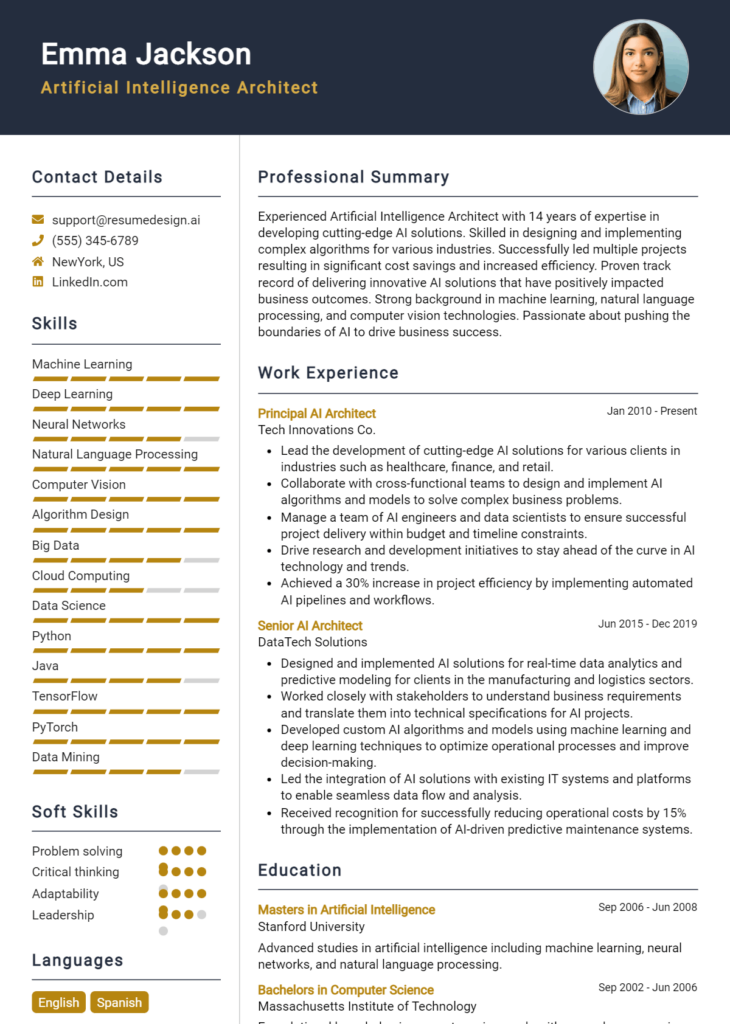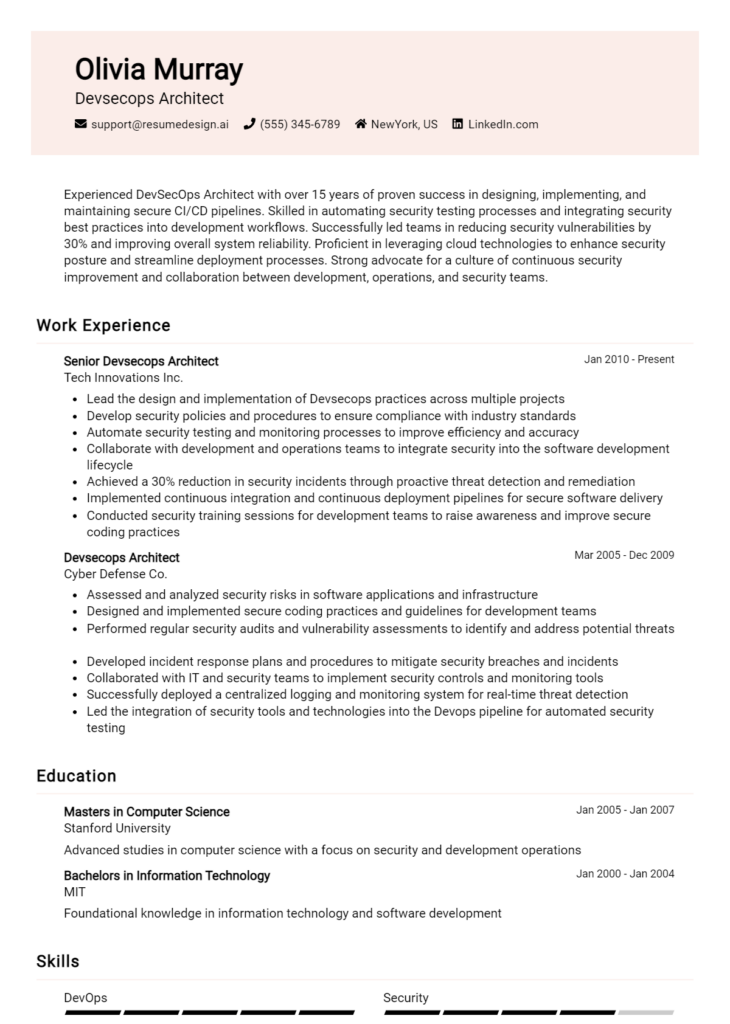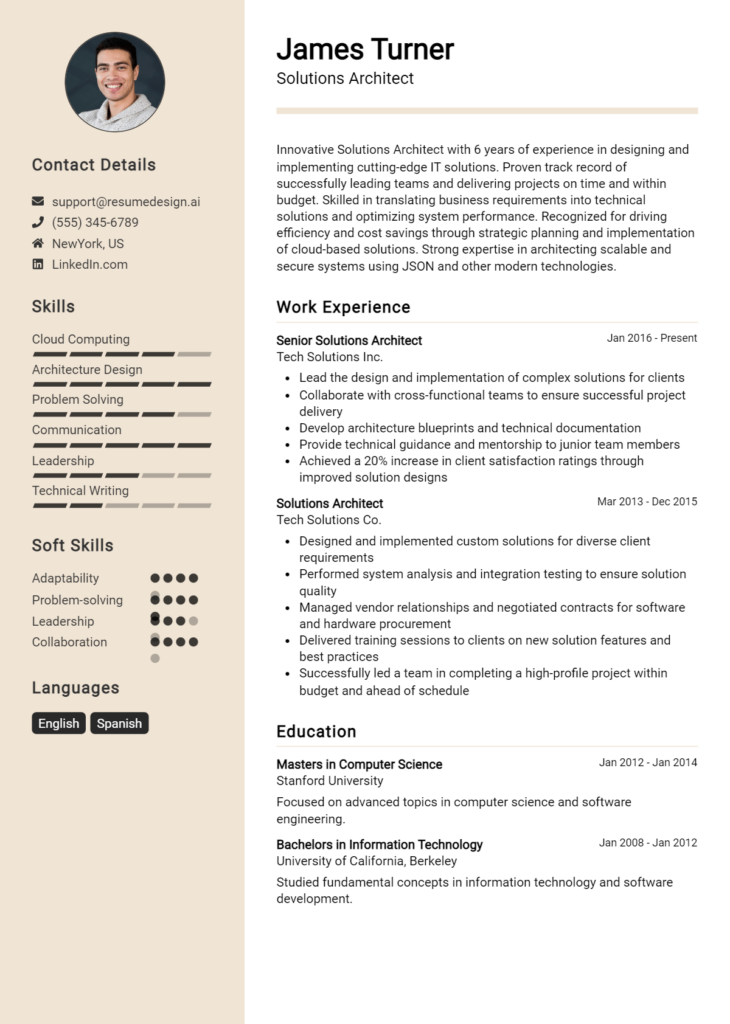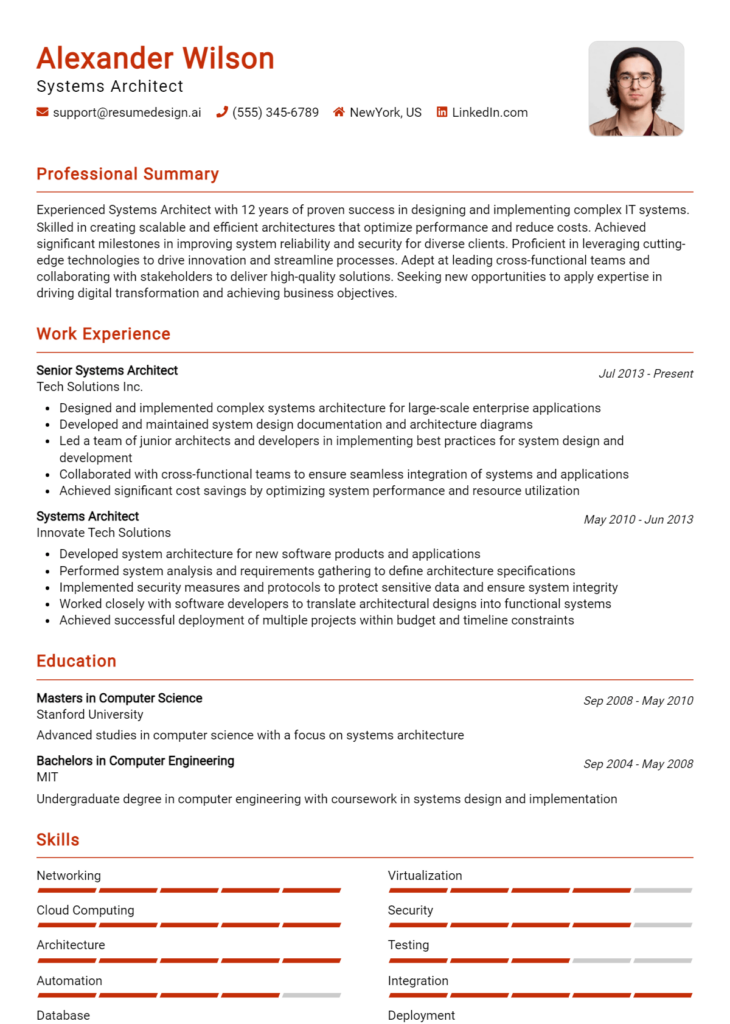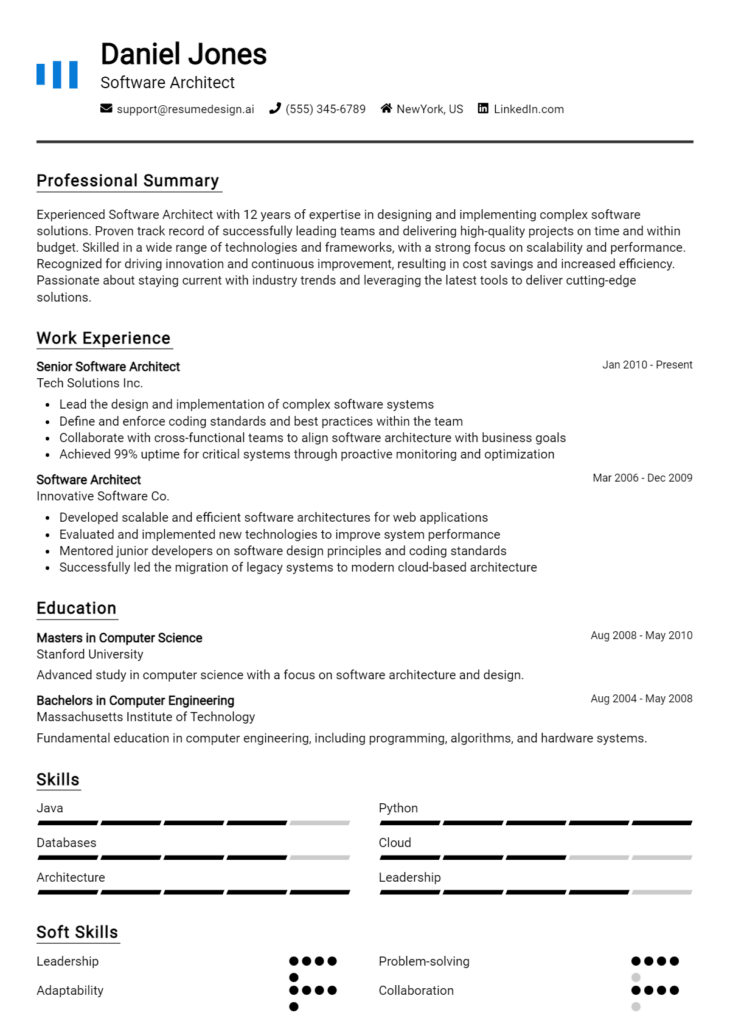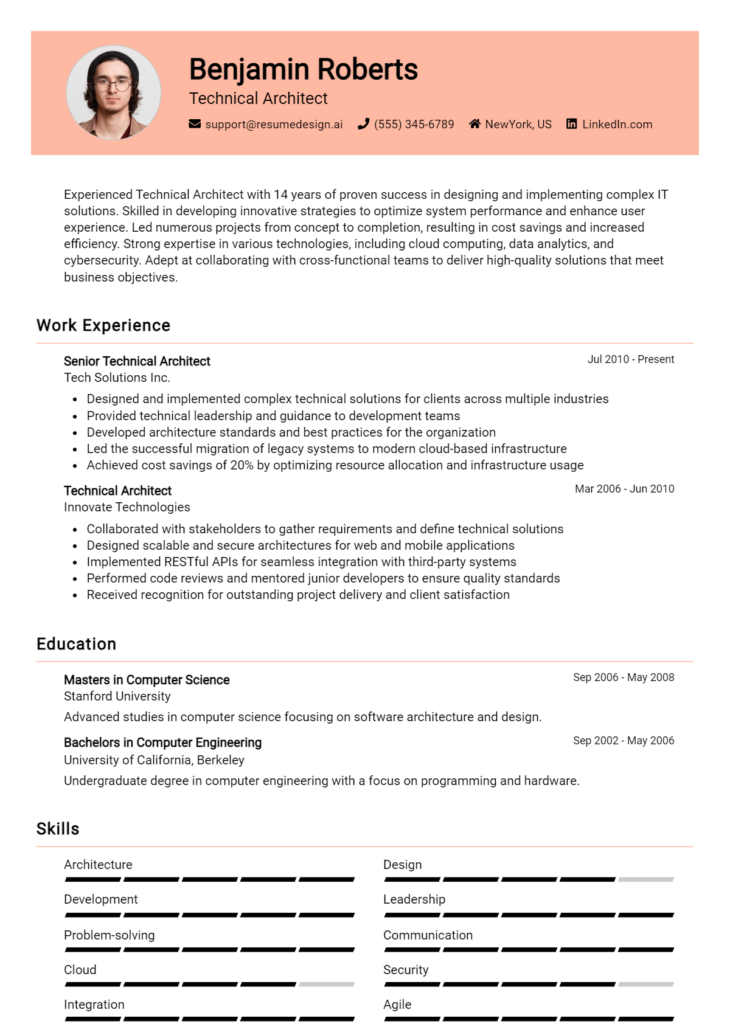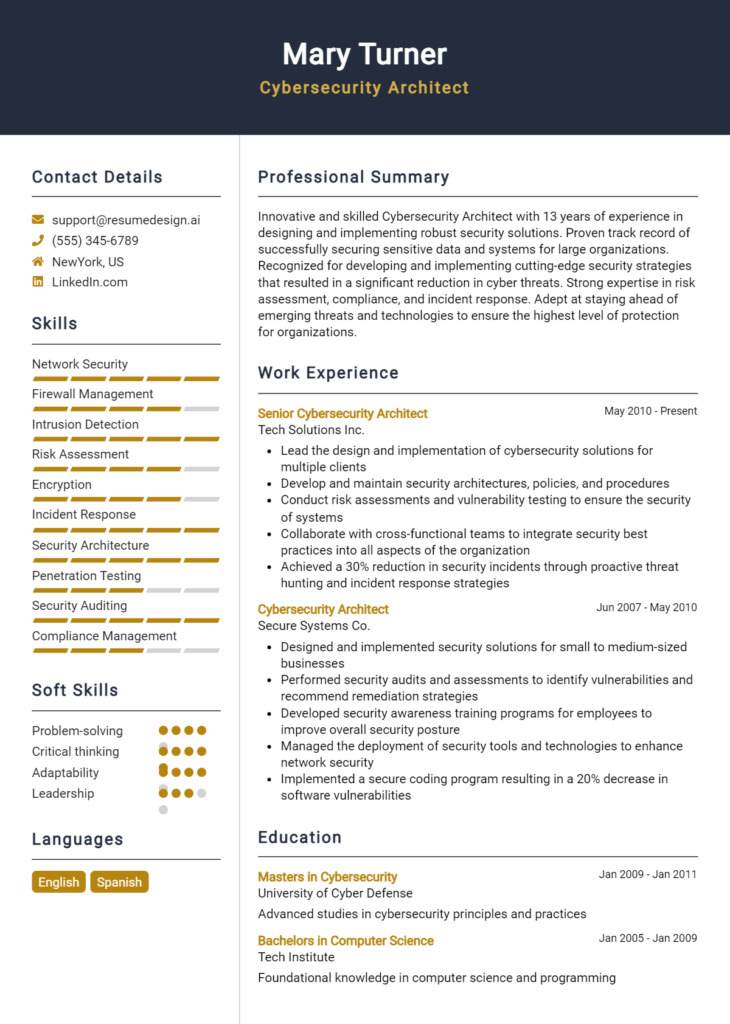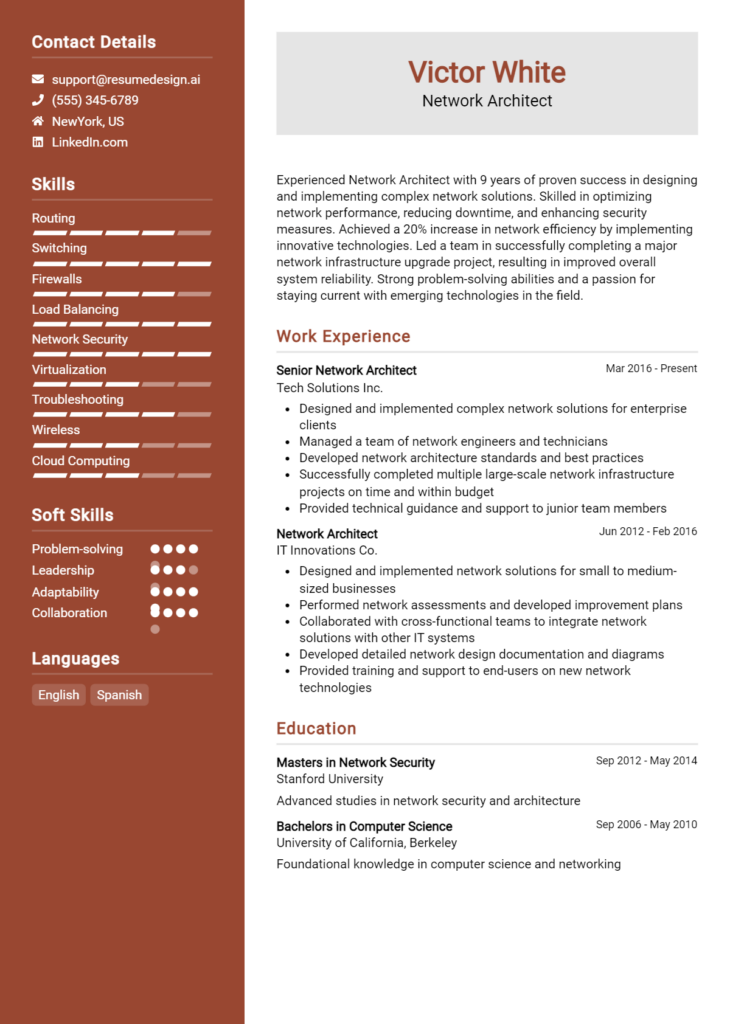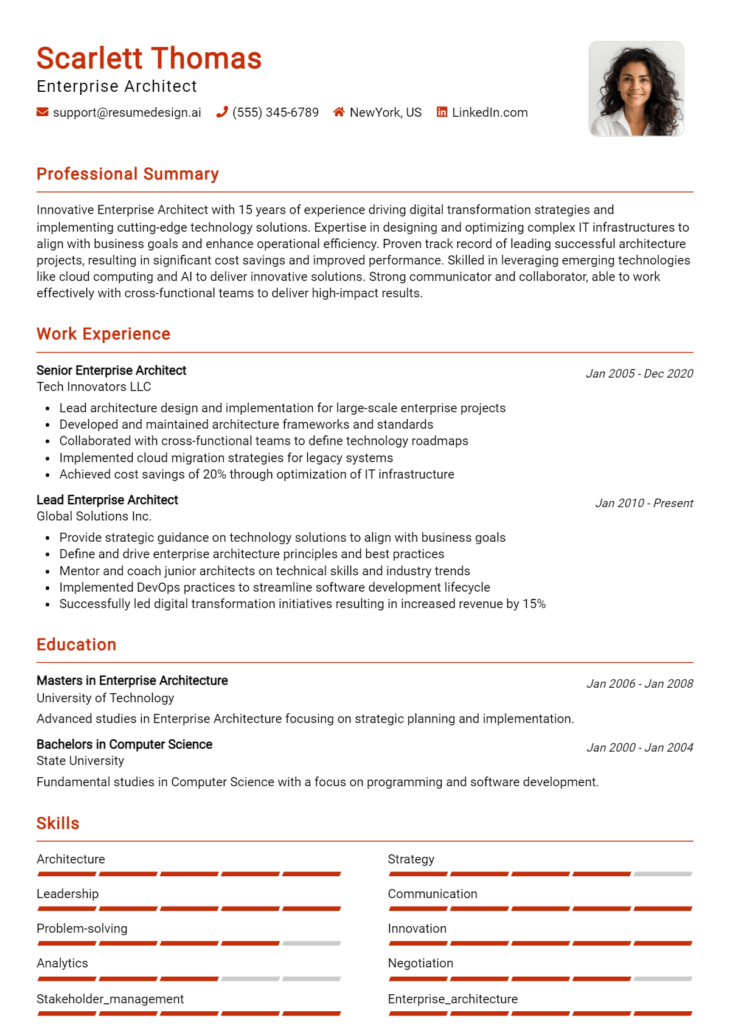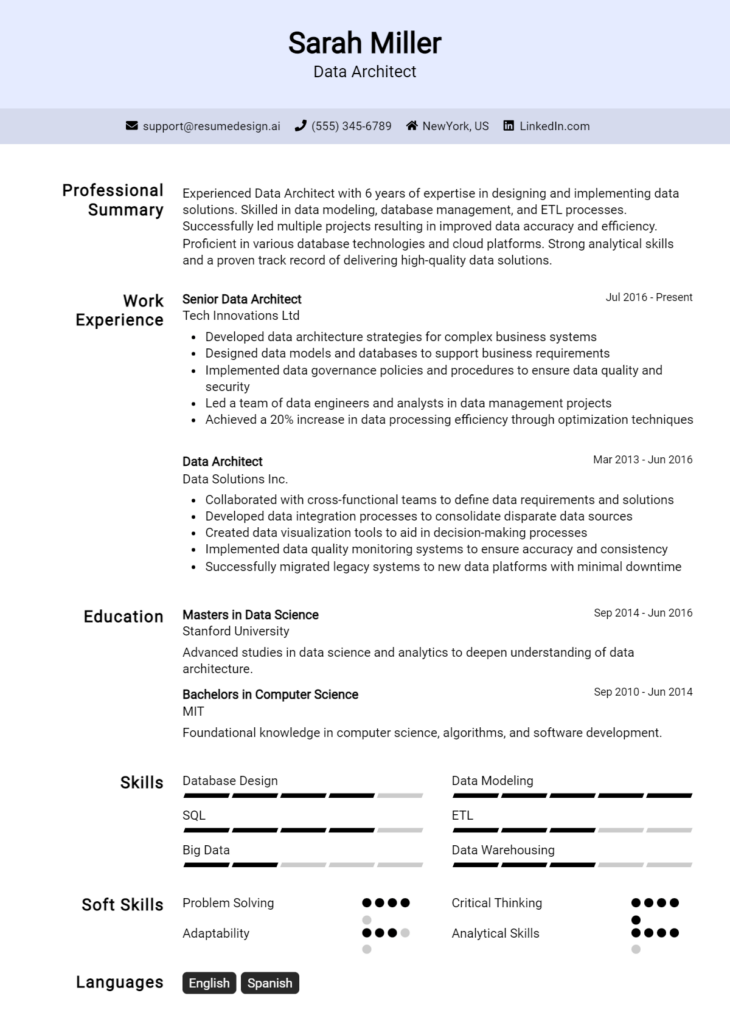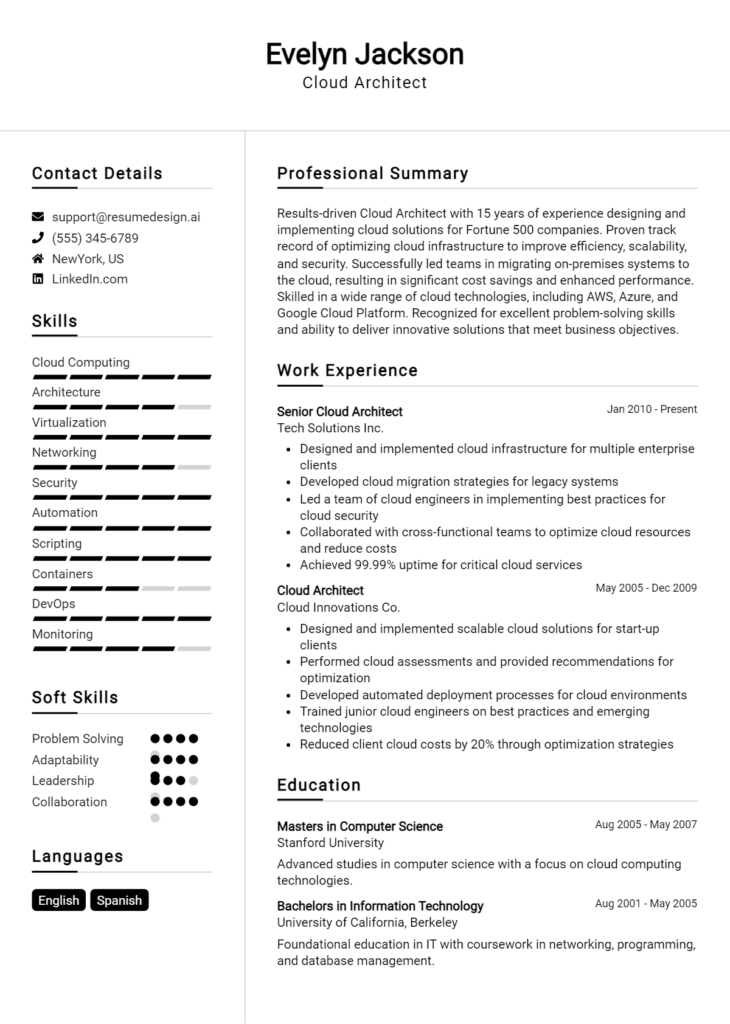Edge Computing Architect Core Responsibilities
An Edge Computing Architect is responsible for designing and implementing edge computing solutions that enhance data processing closer to the source. This role requires a blend of technical expertise, operational insight, and strong problem-solving skills, as architects collaborate across departments such as IT, data analytics, and network engineering. By effectively bridging these functions, they contribute to organizational goals, ensuring scalability and efficiency. A well-structured resume can highlight these qualifications, showcasing the architect’s ability to drive innovation and optimize performance.
Common Responsibilities Listed on Edge Computing Architect Resume
- Designing and implementing edge computing architectures to enhance data processing.
- Collaborating with cross-functional teams to integrate edge solutions into existing infrastructure.
- Assessing and selecting edge computing technologies and platforms.
- Optimizing data flows and reducing latency for real-time applications.
- Conducting feasibility studies and cost-benefit analyses for edge projects.
- Ensuring compliance with security and data privacy regulations.
- Monitoring and maintaining edge computing systems for performance and reliability.
- Providing technical guidance and support to development teams.
- Staying updated on emerging trends and technologies in edge computing.
- Developing and delivering training programs for staff on edge computing practices.
- Documenting architecture designs, processes, and procedures for future reference.
High-Level Resume Tips for Edge Computing Architect Professionals
In the rapidly evolving field of edge computing, a well-crafted resume serves as your first introduction to potential employers, making it crucial to present yourself effectively. As an Edge Computing Architect, your resume needs to not only highlight your technical skills and experience but also showcase your unique achievements in a way that resonates with hiring managers. Your resume is often the deciding factor that determines whether you secure an interview or get overlooked. This guide aims to provide practical and actionable tips specifically tailored for Edge Computing Architect professionals, helping you create a standout resume that reflects your expertise and accomplishments.
Top Resume Tips for Edge Computing Architect Professionals
- Tailor your resume to each job description by using relevant keywords and phrases that match the specific requirements of the position.
- Showcase your experience with edge computing technologies, such as IoT, AI, and cloud integration, to demonstrate your technical proficiency.
- Quantify your achievements by including metrics where possible, such as project completion times, cost savings, or system performance improvements.
- Highlight industry-specific skills, such as knowledge of network architecture, data processing at the edge, and security protocols.
- Include a section for certifications and relevant training that showcases your commitment to professional development in edge computing.
- Utilize a clean and professional format that enhances readability and draws attention to key sections of your resume.
- Incorporate a summary or objective statement that clearly outlines your career goals and the value you bring to potential employers.
- List your technical skills prominently, ensuring they align with the job requirements and demonstrate your capability in edge computing solutions.
- Consider adding a portfolio or links to projects that illustrate your work and innovations in edge computing.
By implementing these tips, you can significantly enhance your chances of landing a job in the Edge Computing Architect field. A well-structured and tailored resume will not only highlight your skills and achievements but also position you as a compelling candidate in the eyes of hiring managers, increasing your likelihood of securing interviews and job offers.
Why Resume Headlines & Titles are Important for Edge Computing Architect
In the competitive field of edge computing, a well-crafted resume headline or title is crucial for an Edge Computing Architect. It serves as the first impression for hiring managers, providing a snapshot of the candidate's key qualifications and ensuring they stand out in a crowded applicant pool. A strong headline can immediately capture attention, succinctly summarizing relevant skills, experiences, and contributions in a single impactful phrase. Therefore, it should be concise, directly related to the role, and tailored to the specific position being applied for, making it a vital element in the job application process.
Best Practices for Crafting Resume Headlines for Edge Computing Architect
- Keep it concise and to the point, ideally under 10 words.
- Use relevant keywords that align with the job description.
- Highlight specific skills or areas of expertise in edge computing.
- Include measurable achievements or certifications when possible.
- Avoid vague language; be specific about your role.
- Tailor the headline for each job application to reflect the company's needs.
- Make it engaging to evoke interest and curiosity.
- Ensure proper spelling and grammar to maintain professionalism.
Example Resume Headlines for Edge Computing Architect
Strong Resume Headlines
Innovative Edge Computing Architect with 10+ Years of Experience in IoT Solutions
Expert in Designing Scalable Edge Architectures for Real-Time Data Processing
Certified Edge Computing Architect Specializing in Cloud Integration and Security
Proven Track Record in Implementing Edge Solutions that Enhance Network Efficiency
Weak Resume Headlines
Experienced IT Professional
Edge Computing Specialist
Looking for Opportunities in Technology
The strong headlines are effective because they are specific, highlighting the candidate's experience, skills, and achievements relevant to the role of an Edge Computing Architect. They immediately convey a sense of expertise and relevance, making a memorable impression on hiring managers. In contrast, the weak headlines lack detail and clarity, failing to communicate the candidate's unique qualifications or demonstrate their fit for the position. This generic approach can lead to candidates being overlooked in favor of those who present themselves more compellingly.
Writing an Exceptional Edge Computing Architect Resume Summary
A well-crafted resume summary is vital for an Edge Computing Architect as it serves as the first impression for hiring managers. This succinct statement should encapsulate the candidate's key skills, relevant experience, and notable accomplishments, showcasing their suitability for the role. A strong summary quickly captures attention, encouraging hiring managers to delve deeper into the resume. It should be concise, impactful, and meticulously tailored to align with the specific job description, ensuring that the candidate stands out in a competitive job market.
Best Practices for Writing an Edge Computing Architect Resume Summary
- Quantify Achievements: Use numbers and metrics to highlight accomplishments, such as project completion rates or cost savings.
- Focus on Relevant Skills: Emphasize technical skills and expertise that directly relate to edge computing and the job role.
- Tailor for the Job Description: Customize the summary to reflect the specific requirements and responsibilities outlined in the job listing.
- Highlight Industry Experience: Mention years of experience and familiarity with relevant technologies and methodologies.
- Showcase Problem-Solving Abilities: Illustrate how you've addressed challenges in previous positions, demonstrating your critical thinking and innovation.
- Keep It Concise: Aim for 2-4 sentences that deliver maximum impact without becoming overly verbose.
- Use Action-Oriented Language: Start sentences with strong action verbs to convey confidence and decisiveness.
- Include Certifications and Education: If applicable, mention relevant certifications or degrees that enhance your qualifications for the role.
Example Edge Computing Architect Resume Summaries
Strong Resume Summaries
Results-driven Edge Computing Architect with over 7 years of experience in designing scalable edge solutions, achieving a 30% reduction in latency for IoT applications. Proficient in AWS Greengrass and Azure IoT Edge, with a proven track record of leading cross-functional teams to deliver projects on time and within budget.
Innovative Edge Computing Architect skilled in implementing distributed computing frameworks, which led to a 25% increase in data processing efficiency. Adept at utilizing machine learning algorithms to optimize edge device performance, leveraging 5 years of industry experience to drive technological advancements.
Dynamic Edge Computing Architect with expertise in edge analytics and cloud integration, recognized for successfully deploying over 100 edge nodes, reducing operational costs by 20%. Strong background in cybersecurity measures for edge environments, ensuring data integrity and compliance.
Weak Resume Summaries
Experienced IT professional with knowledge in edge computing technologies and various programming languages. Seeking a position to utilize my skills.
Edge Computing Architect looking for new opportunities. I have worked on several projects and am familiar with many technologies in the field.
The strong resume summaries are considered effective because they highlight specific achievements, quantify results, and directly relate to the edge computing field, showcasing the candidate's unique value proposition. In contrast, the weak summaries lack detail and specificity, making them generic and unremarkable, failing to convey the candidate's potential contributions to prospective employers.
Work Experience Section for Edge Computing Architect Resume
The work experience section of an Edge Computing Architect resume is pivotal in demonstrating a candidate's technical skills, leadership capabilities, and proficiency in delivering high-quality solutions. This section not only highlights the candidate's background in edge computing technologies but also illustrates their ability to manage teams effectively and drive successful project outcomes. By quantifying achievements and aligning previous roles with industry standards, candidates can significantly enhance their appeal to potential employers, showcasing their readiness to tackle the complexities of edge computing environments.
Best Practices for Edge Computing Architect Work Experience
- Emphasize technical expertise by detailing specific technologies and methodologies used.
- Quantify achievements with metrics such as performance improvements, cost savings, or project completion times.
- Highlight collaborative efforts by mentioning cross-functional teams and partnerships with stakeholders.
- Describe leadership roles, including team management and mentoring responsibilities.
- Align experiences with industry standards and current trends in edge computing.
- Use action verbs to convey impact and responsibility in each role.
- Prioritize relevant experiences that directly relate to edge computing projects.
- Maintain clarity and conciseness in descriptions to engage the reader effectively.
Example Work Experiences for Edge Computing Architect
Strong Experiences
- Led a team of 10 engineers to design and implement an edge computing solution that reduced latency by 40%, resulting in a 30% increase in customer satisfaction scores.
- Developed and deployed a scalable edge architecture across 50+ locations, achieving a 25% reduction in operational costs through optimized resource utilization.
- Collaborated with data scientists and software engineers to create an AI-driven edge analytics platform, enhancing real-time data processing capabilities by 50%.
- Managed cross-departmental initiatives that integrated IoT devices with edge computing frameworks, improving data collection efficiency by 35%.
Weak Experiences
- Worked on edge computing projects with some success.
- Assisted in the deployment of various technologies related to edge computing.
- Participated in meetings to discuss edge solutions and strategies.
- Involved in a project that aimed to improve system performance.
The examples provided illustrate a stark contrast between strong and weak experiences. Strong experiences are clearly defined, highlighting specific achievements, quantifiable results, and collaborative efforts that demonstrate leadership and technical expertise. In contrast, weak experiences lack clarity and specificity, providing vague statements that do not convey the candidate's impact or contributions effectively. This distinction emphasizes the importance of articulating one's experience in a way that resonates with the expectations of employers in the edge computing domain.
Education and Certifications Section for Edge Computing Architect Resume
The education and certifications section of an Edge Computing Architect resume plays a crucial role in establishing the candidate's qualifications and expertise in a fast-evolving field. This section not only showcases the academic background relevant to edge computing but also highlights industry-recognized certifications that validate the candidate's skills and knowledge. Continuous learning is essential in technology, and listing relevant coursework, certifications, and specialized training demonstrates a commitment to staying updated with the latest trends and technologies. By providing this information, candidates can significantly enhance their credibility and align themselves with the specific requirements of the job role.
Best Practices for Edge Computing Architect Education and Certifications
- Focus on relevant degrees such as Computer Science, Information Technology, or Systems Engineering.
- Include industry-recognized certifications, such as AWS Certified Solutions Architect or Azure Solutions Architect Expert.
- Highlight specialized training in edge computing technologies and frameworks.
- Provide details about relevant coursework that demonstrates knowledge of networking, cloud computing, and IoT.
- Ensure certification dates are current to reflect ongoing professional development.
- Consider including online courses or workshops from reputable platforms that focus on edge computing topics.
- List any participation in industry conferences or seminars that relate to edge computing.
- Organize this section in reverse chronological order to emphasize the most recent and relevant qualifications.
Example Education and Certifications for Edge Computing Architect
Strong Examples
- M.S. in Computer Science with a focus on Cloud Computing, University of Technology, 2023
- AWS Certified Solutions Architect – Associate, Certified in 2022
- Coursework: Edge Computing and IoT Applications, completed in 2021
- Professional training in Kubernetes and Docker for Edge Deployments, 2022
Weak Examples
- B.A. in History, University of Arts, 2010
- Certification in Microsoft Office Suite, Certified in 2019
- Outdated course on Legacy Networking, completed in 2015
- Basic IT Support Certification, acquired in 2018
The examples listed above are considered strong because they are directly relevant to the role of an Edge Computing Architect and demonstrate advanced knowledge and current qualifications in the field. In contrast, the weak examples lack relevance to edge computing and do not reflect the necessary skills or expertise required for modern architectural roles in technology, thereby diminishing the candidate's competitive edge in the job market.
Top Skills & Keywords for Edge Computing Architect Resume
In the rapidly evolving landscape of technology, the role of an Edge Computing Architect has become crucial for organizations looking to optimize their data processing capabilities. A well-crafted resume for this position must highlight a blend of essential skills that showcase both technical proficiency and interpersonal abilities. These skills not only demonstrate a candidate’s capability to design and implement edge computing solutions but also their aptitude for collaboration and communication within multidisciplinary teams. By emphasizing relevant skills, candidates can effectively communicate their value to potential employers and set themselves apart in a competitive job market.
Top Hard & Soft Skills for Edge Computing Architect
Soft Skills
- Strong problem-solving abilities
- Effective communication skills
- Team collaboration and leadership
- Adaptability to changing technologies
- Critical thinking
- Project management
- Time management
- Creative thinking
- Stakeholder engagement
- Conflict resolution
Hard Skills
- Expertise in cloud computing architectures
- Proficiency with IoT technologies
- Knowledge of network security protocols
- Experience with containerization (e.g., Docker, Kubernetes)
- Familiarity with edge analytics tools
- Programming skills (e.g., Python, Java)
- Understanding of data storage solutions
- Skills in system integration
- Knowledge of machine learning algorithms
- Familiarity with DevOps practices
By focusing on these skills, candidates for the Edge Computing Architect role can effectively showcase their qualifications. Additionally, integrating relevant work experience into their resumes will further enhance their appeal to potential employers, demonstrating their hands-on expertise in the field.
Stand Out with a Winning Edge Computing Architect Cover Letter
Dear [Hiring Manager's Name],
I am writing to express my interest in the Edge Computing Architect position at [Company Name], as advertised on [where you found the job listing]. With a solid background in cloud computing and distributed systems, coupled with my hands-on experience in developing and implementing edge computing solutions, I am excited about the opportunity to contribute to your innovative team. My passion for harnessing technology to improve operational efficiency aligns perfectly with [Company Name]'s mission to deliver cutting-edge solutions to its clients.
In my previous role at [Previous Company Name], I led the design and deployment of an edge computing framework that reduced latency by 40% and enhanced data processing capabilities for IoT devices. I collaborated closely with cross-functional teams to integrate edge analytics, ensuring that real-time data insights were readily available for decision-making. My proficiency in technologies such as Kubernetes, Docker, and various edge devices has equipped me with the skills necessary to architect scalable and resilient edge solutions tailored to meet specific business needs.
I am particularly drawn to [Company Name] because of your commitment to pioneering advancements in edge computing and your focus on creating sustainable, efficient systems. I am eager to bring my expertise in system architecture and my passion for innovation to your team. I believe that my strategic approach to designing edge solutions, combined with my ability to communicate complex technical concepts to non-technical stakeholders, will make a valuable contribution to your ongoing projects and future initiatives.
Thank you for considering my application. I look forward to the opportunity to discuss how my background, skills, and enthusiasms align with the goals of [Company Name]. I am excited about the prospect of working together to push the boundaries of edge computing and create transformative solutions for your clients.
Sincerely,
[Your Name]
[Your LinkedIn Profile or Portfolio URL]
[Your Contact Information]
Common Mistakes to Avoid in a Edge Computing Architect Resume
Crafting a resume for an Edge Computing Architect position requires a blend of technical proficiency and effective communication skills. However, many candidates make common mistakes that can undermine their chances of landing an interview. Below are some prevalent pitfalls to avoid when creating your resume to ensure it effectively showcases your expertise and experience in edge computing.
Vague Job Descriptions: Failing to provide specific details about your previous roles can leave hiring managers unclear about your actual contributions and responsibilities. Quantify your achievements with tangible metrics where possible.
Ignoring Relevant Skills: Edge computing encompasses a range of skills, from cloud architecture to IoT integration. Neglecting to highlight relevant technical skills or certifications can diminish your appeal for the role.
Overloading with Jargon: While technical terminology is essential, excessive jargon can make your resume difficult to read. Strive for a balance that showcases your expertise while remaining accessible to HR personnel.
Lack of Tailoring: Sending a generic resume for every job application is a missed opportunity. Tailor your resume to each position by incorporating keywords from the job description and aligning your experiences with the specific requirements.
Neglecting Soft Skills: Technical skills are crucial, but soft skills such as communication, teamwork, and problem-solving are equally important for an Edge Computing Architect. Be sure to include examples that demonstrate these abilities.
Poor Formatting: A cluttered or unorganized resume can distract from your qualifications. Use clear headings, bullet points, and a clean layout to enhance readability and ensure that your key information stands out.
Skipping Professional Development: Failing to mention ongoing education, certifications, or training related to edge computing can signal a lack of commitment to staying current in the field. Include any relevant courses or workshops to demonstrate your dedication.
Omitting Personal Projects: If you have worked on personal or open-source projects related to edge computing, don't forget to include them. This showcases your initiative and passion for the field, giving you an edge over other candidates.
Conclusion
As we conclude our exploration of the Edge Computing Architect role, it’s essential to recap the critical aspects of this position. Edge Computing Architects play a pivotal role in designing and implementing distributed computing solutions, focusing on optimizing data processing at the edge of the network. They must possess a deep understanding of cloud computing, network architecture, and data analytics, as well as the ability to collaborate with cross-functional teams to ensure seamless integration of edge technologies.
With the increasing demand for low-latency data processing and the proliferation of IoT devices, the need for skilled Edge Computing Architects is on the rise. This role requires not only technical expertise but also strategic foresight to align edge computing initiatives with business objectives.
To ensure you stand out in this competitive field, it’s crucial to have a well-crafted resume that highlights your skills and experiences relevant to edge computing. Take the time to review and update your Edge Computing Architect resume, emphasizing your achievements and technical proficiencies.
To assist you in this process, consider utilizing helpful resources such as resume templates, which can provide a professional layout for your information. You might also benefit from a resume builder that allows you to create a custom resume tailored to your career goals. Additionally, reviewing resume examples can inspire you and give you insights into how to present your qualifications effectively. Don’t forget to enhance your application with a compelling cover letter template to make a strong impression.
By taking action now to refine your resume, you’ll position yourself as a strong candidate in the evolving landscape of edge computing. Start the journey towards your next opportunity today!

